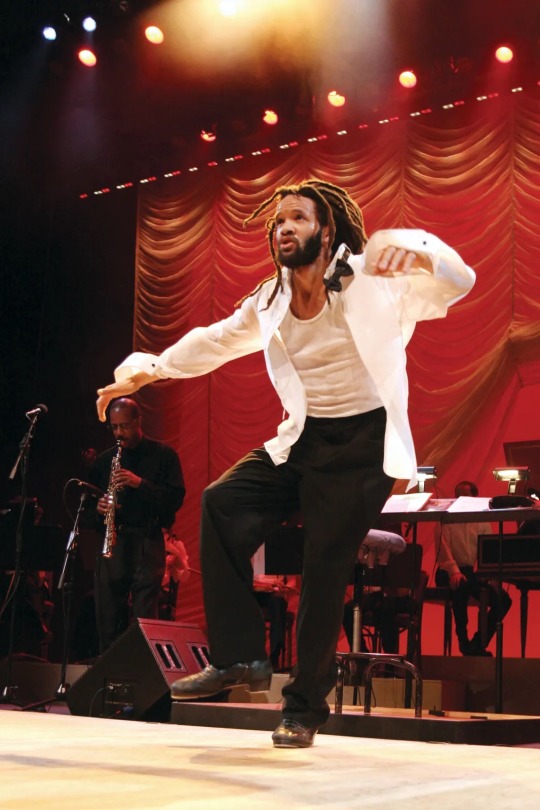#savion glover
Video
youtube
Blackface Minstrel Show from Bamboozled - Part 3
Thomas Jefferson Byrd appears in Blackface as Honeycutt, the MC in Bamboozled. Savion Glover also appears.
3 notes
·
View notes
Text
Dance Nowhere Near Tapped Out
Dance Nowhere Near Tapped Out #fromtheblog
National Tap Dance Day is May 25. The date commemorates the birth of Bill “Bojangles” Robinson, one of tap’s greatest practitioners. He may be best known for his stair dance routine with Shirley Temple in 1935’s The Little Colonel. But his career stretched back to vaudeville and minstrel shows and continued through Broadway, movies, radio and television.
The 1943 film Stormy Weather starred…
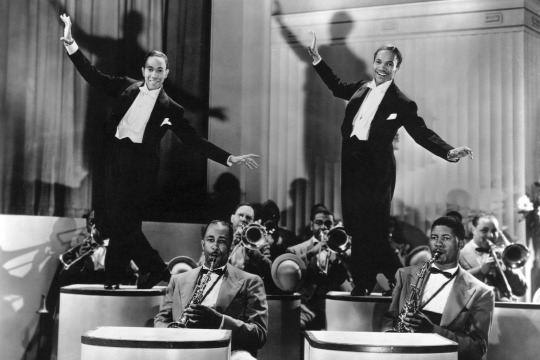
View On WordPress
#Anything GOes#arts#Broadway#dance#dance routine#Fred Astaire#Patel Conservatory#performing arts#Rockette#Savion Glover#straz center#straz center for the performing arts#Tampa#tap#tap dance#theater
0 notes
Text
Little bitty me learning rhythm tap from Savion Glover from the Happy Feet extras only to realize as I grew up that it slowly morphed into some weird rhythm tap/flatfoot monstrosity with no rhyme or reason. Like its neither but it's still fun and I feel like I've pulled myself home by my roots when I do it.
1 note
·
View note
Text

“Artist Manifesto” - a manifest from a choreographer that I did for my musical theatre course. Savion Glover, the one and only
0 notes
Text
Nicholas Brothers: Stormy Weather
Nicholas Brothers: Stormy Weather
It’s opening day at the Tribeca Festival (June 8-19) and I want to take the occasion to plug one film they’re showing in particular.
I don’t usually get excited about modern movie shorts but I think you’ll instantly understand why this one jumped out at me (see what I did there?). The 20 minute documentary Nicholas Brothers: Stormy Weather is a fast-moving and fascinating deconstruction and…

View On WordPress
#Dance#documentary#Le Twins#Michael Shevloff#movie#Nicholas Brothers#Paul Crowder#Savion Glover#short#Stormy Weather#tap#Tribeca Festival#Tribeca Film Festival
0 notes
Text
uhhh i just tap danced for the first time in six years and i sure am feeling things
#oli talks#joy!! but also sadness!!#in another life i'm on broadway i'm a dance teacher i'm tapping with savion glover#in this life i'm tap dancing in the basement of my childhood home that i never left and i'm exhausted after five minutes#but i'm still doing it. i'm still trying. that counts for something.#i'll stick with ballet until my body gets stronger then i'll try again#who knows how far i'll get on that path but at least i'm on a path for once!
3 notes
·
View notes
Text
So anyway, Happy Feet (2006) is about being neurodivergent. In this essay, I will-
#slightly /hj but mostly /gen#sometimes i get a sudden burst of energy and get the urge to tap dance and this movie makes me feel seen ya know?#when his dad asks why hes dancing and mumble says its because his feet are happy? i feel that!!#really really miss tap dancing#ive been watching and rewatching videos of savion glover so much recently#if i ever get brave enough to do commissions (or get better at saving money in general) first thing im getting is a new pair of tap shoes!
21 notes
·
View notes
Text
Ooookay, random OC thought is random, but I've just decided that on top of being able to play ukelele, harmonica, and Jew's harp, Jasper is also an amateur tap dancer.
What can I say? He's a young man with quite a few talents.
#Bird Boy#Text Post#My OCs#Jasper Avalon#He started taking lessons when he was around 5 and stopped around 15 but needless to say his muscle memory...#... is STILL pretty strong in that particular area. Some things just don't leave you.#He's not exactly Savion Glover or Sarah Reich but he certainly isn't shabby either.😉#Also I can't help but imagine Alannah watching him tap dance and just MELT because it reminds her of her...#... late grandfather who also loved to tap dance and performed at many local venues in his heyday.💞💞💞
1 note
·
View note
Text

Savion Glover
Born: November 19, 1973
Birthplace: Newark, NJ
Zodiac Sign: Scorpio
Savion Glover is an American tap dancer, actor, and choreographer.
Glover was born to a white father who left the family before he was born and a black mother. Glover's great grandfather on his mother's side, Dick Lundy, was a shortstop in the Negro Leagues. He managed eleven Negro League baseball teams, including the Newark Eagles. His grandfather, Bill Lewis, was a big band pianist and vocalist. His grandmother, Anna Lundy Lewis, was the minister of music at New Hope Baptist Church in Newark, NJ. She played for Whitney Houston when she was singing in the gospel choir, and was the one who first noticed Savion's musical talent. She once held him and hummed some rhythms to him, and he smiled and joined along. Glover graduated from Newark Arts High School in 1991.
Glover stated that his style is "young and funk." When asked to describe what funk is, he says it is the bass line. "Funk is anything that gets one's head on beat. It is riding with the rhythm. It is a pulse that keeps one rolling with the beat." Gregory Hines, a tap legend, was one of Glover's tap teachers. Hines stated that "Savion is possibly the best tap dancer that ever lived." Glover liked to start his pieces with some old school moves from famous tappers and then work his way into his own style. Hines said it’s like paying homage to those he respects. When Honi Coles died, Savion performed at his memorial service. He finished his dance with a famous Coles move, a backflip into a split from standing position, then getting up without using one's hands. Glover rarely does this move because it wasn't his style, but he did it because it was Coles' style that he wanted to keep alive. "I feel like it's one of my responsibilities to keep the style." Henry LeTang called Glover "the Sponge" because he learned very quickly with everything thrown at him. LeTang taught the Hines brothers back in the 1950s and taught Glover for a little while before having him work for "Black and Blue," a tap revue in Paris in 1987. Many legendary tappers taught Glover such as LeTang, the Hines brothers, Jimmy Slyde, Dianne Walker, Chuck Green, Lon Chaney (Isaiah Chaneyfield), Honi Coles, Sammy Davis Jr., Buster Brown, Howard Sims, and Arthur Duncan.
He has been teaching tap since he was 14 years old. Glover created Real Tap Skills, and started HooFeRz Club School for Tap in Newark, New Jersey. Wanting to bring back the real essence of tap, Glover claimed that he is on a mission to reclaim the rhythm that was lost when tap dancing was recycled after many generations. At age seven, Glover drummed in a group called Three Plus One. In the group, he demanded that he dance while he played the drum. Glover has a heavy foot for tap. He dances hard and loud in every step, and teaches his mentees that one must learn how to "hit," a term related to one's ability to express oneself, complete a tap sequence, or say something.
Thank you, Black American page
2 notes
·
View notes
Text
I first saw Bamboozled as a 15-year-old, in April 2001, at the Ritzy Cinema in Brixton, south-west London, and it threw me for a loop. Written and directed by Spike Lee, the film is an intense satire about a frustrated African American TV executive, Pierre Delacroix (Damon Wayans), who creates a contemporary version of a minstrel show in order to purposefully get himself fired, and expose the commissioning network as a racist and retrograde outfit. However, the show, which features its black stars wearing blackface, becomes a huge hit, prompting Delacroix’s mental collapse, and an explosion of catastrophic violence, the effects of which are felt far and wide.
In a fraught contemporary climate where the mediation of the black image in American society is at a crucial juncture, Bamboozled’s trenchant commentary on the importance, complexity and lasting effects of media representation could hardly feel more urgent. Each time an unarmed black person is killed, then hurriedly repositioned in death as a thug, a brute, or a layabout by mainstream media outlets – as has happened recently to Trayvon Martin, Michael Brown, Eric Garner, Samuel DuBose and countless others – we are seeing the perpetuation of old anti-black stereotypes, forged in the crucible of mass American art, reconfigured for our time.
Lee’s film traces a grim continuum between stereotypes old and new, connected by knotty skeins of institutional racism. Many critics at the time of the film’s release suggested that Lee had needlessly reopened old wounds; that the dark days of minstrelsy were comfortably behind us, and that we should move on. Yet Lee’s vision was not only necessary, it proved remarkably prescient. During the course of writing this book, I rewatched episodes of garish reality TV shows like Flavor of Love (2006-8), starring the clock-wearing rapper-cum-jester Flavor Flav, and The Real Housewives of Atlanta (2008-). I had to concede that Bamboozled’s nightmarish New Millennium Minstrel Show didn’t look so far-fetched after all. I sat gape-mouthed in front of Lee Daniels and Danny Strong’s musical soap opera Empire (2014-) – a wildly entertaining but exceedingly dubious carnival of black pathologies – and couldn’t help but wonder if it was the type of show that would get Bamboozled’s master-wigger network boss Dunwitty (Michael Rapaport) hot under the collar at proposal stage.
When, in October 2014, I saw footage of freshly signed rapper Bobby Shmurda literally dancing on a table in front of a group of executives, exactly like performer Manray (Savion Glover) does in Bamboozled, I began to wonder whether Lee was in fact a secret soothsayer. Not even he, however, could have predicted the transcendentally weird tale of Rachel Dolezal, the NAACP leader in Spokane, Washington, who was revealed to have been white, and posing as African American all along. At the time of the incident, many wags on social media suggested that Lee would be the ideal man to direct Bamboozled 2: The Rachel Dolezal Story.
Bamboozled’s shrewd commentary on the lack of behind-the-scenes diversity in mainstream entertainment is also especially relevant today. The presence of figures like Robin Thede – head writer on The Nightly Show With Larry Wilmore, and the first black woman to hold that position on a late-night network comedy show – and Shonda Rhimes, the powerful showrunner behind Grey’s Anatomy, Scandal and How To Get Away With Murder, is heartening. Yet a report released in March 2015 by the Writer’s Guild of America West revealed that minority writers accounted for just 13.7% of employment: a dismal statistic. Moreover, Rhimes’s success didn’t insulate her from being disrespectfully branded as an “Angry Black Woman” – that most pernicious of stereotypes – in a rancid, supposedly flattering article by Alessandra Stanley in the New York Times
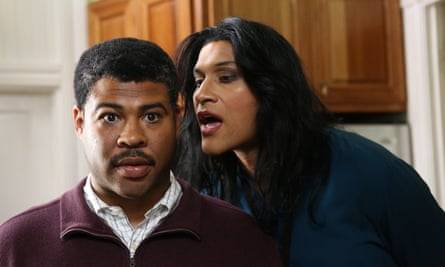
While most of us can cheer the incrementally increasing diversity on our film and television screens, Bamboozled forces us to question the quality and progressiveness of these roles. Ostensibly it’s great that talented actors such as Mo’Nique (Precious, 2009), Octavia Spencer (The Help, 2011) and Lupita Nyong’o (12 Years a Slave, 2013) are winning Oscars, but isn’t the shine taken off somewhat by the fact they were rewarded by the establishment for playing, respectively, a psychotic “welfare queen”, a neo-Mammy in a white savior period picture, and a chronically abused slave? Why don’t black women win Oscars for playing complex heroines or crotchety geniuses like their white male counterparts? Because old stereotypes die hard within an industry that prefers stasis over change. Perhaps even more disturbingly, there’s something inherently soothing about such stereotypes for mass audiences – a point particularly relevant to the wild popularity of Bamboozled’s own minstrel show.
And how far have we come, really? Ridley Scott cast a host of white actors (including a fake tan-enhanced Christian Bale and Joel Edgerton) in his Middle Eastern epic/flop Exodus: Gods and Kings (2014), but his response to complaints was both flippant, and distressingly matter-of-fact: “I can’t mount a film of this budget, where I have to rely on tax rebates in Spain, and say that my lead actor is Mohammad so-and-so from such-and-such. I’m just not going to get it financed. So the question doesn’t even come up.” The best riposte to Scott and his film came from independent black film-maker Terence Nance, who wrote that “[l]ike The Birth of a Nation before it, [Exodus] traffics in absurd cultural appropriation and brown-faced minstrel casting/makeup techniques to rewrite African history as European history, and in so doing propagates the idea that European cultural centrality is more important than historical fact and the ever-evolving self-image of African-descended people as it is influenced by popular representations of people of color in Western media distributed worldwide.”
Nance, however, is just one talented black film-maker among many (Dee Rees, Tina Mabry, Haile Gerima, Julie Dash, Barry Jenkins et al) who have struggled to attract funding to tell artistic and personal stories outside of the monolithic, corporate world of mainstream entertainment which Bamboozled so acidly depicts (even if it is set in the world of TV rather than film.) Lee has long been vocal about the struggles he’s faced in raising funds to tell black-focused stories, and even he had to go cap in hand to fans on Kickstarter to crowd-fund his idiosyncratic, low-budget vampire movie Da Sweet Blood of Jesus (2014). Da Sweet Blood is his most excessive, least easily readable work since Bamboozled, but it can’t match his earlier film for sheer visceral impact.
Bamboozled, then, is a genuine one-off, but I can detect traces of its relentless, irritable, questioning approach in a variety of contemporary art. I see it in Justin Simien’s excellent college-set satire Dear White People (2014), which was inspired by horrific, real-life blackface parties at universities across America. I see it in the antic situational comedy of Key & Peele, whose best sketch, musical spoof “Negrotown”, compresses the madness, pathos and insight of Lee’s film into four-and-a-half harrowingly hilarious minutes. I see it in Branden Jacobs-Jenkins thrillingly audacious play An Octoroon (2013), which reconfigures blackface tropes in daring ways. Most of all I see it coursing through the veins of Paul Beatty’s scabrous satirical novel The Sellout (2015), about a shiftless young black Angeleno who hatches a plot to reintroduce racial segregation, and takes an elderly slave – a disturbed former “pickaninny” star of Little Rascals films – while he’s at it. Like Lee’s film, it plays as a shotgun blast to the face of formal convention, it’s stubbornly resistant to a single concrete interpretation, and it has a lot of very painful things to say about America today.
ABC’s enjoyably gentle sitcom Black-ish (2014-), meanwhile, simultaneously echoes Delacroix’s crisis – with its premise of a middle-class black ad executive (Anthony Anderson) jockeying for position in a white corporate space – and feels like the kind of show Delacroix, free of Dunwitty’s pressure, might have concocted himself.
Lastly, I couldn’t help but think of Bamboozled while poring over Ta-Nehisi Coates’s epic essay in the Atlantic, The Case for Reparations, which uncovers, in forensic detail, the institutional plunder of black Americans from slavery to redlining to mass incarceration and its destructive impact on families. Coates’s fury is more controlled than Lee’s, but it’s equally sincere, and his essay shares with Bamboozled the central imperative to look directly into the heart of past racial sins in order to plot a productive way forward.
It is time, then, to take a close look at Bamboozled, which deserves to be respected as much more than a mid-career oddity in Lee’s filmography. It is a vital work that’s equal parts crystal ball and cannonball: glittering and prophetic, heavy and dangerous.
#Bamboozled: Spike Lee's masterpiece on race in America is as relevant as ever#Bamboozled#Spike Lee#Black Film#Black Movies#Black Actors#The Wayans Brothers#Black and White Comedy
7 notes
·
View notes
Photo
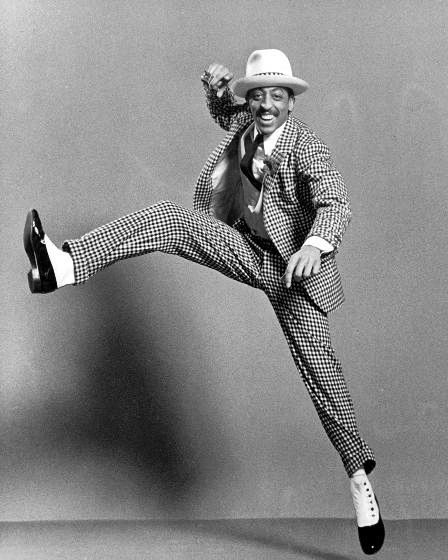
On This Day in New York City History February 14, 1946: Tap Dancer, actor, choreographer and singer Gregory Oliver Hines is born in New York City and raised in the Sugar Hill neighborhood of Harlem. He was born into a musical family with his father Maurice Robert Hines being a dancer, musician and actor. Hines the elder put his sons on the path to entertainment. Gregory was dancing as early as the age of 4 and performed with his brother at the legendary Harlem Venue the Apollo at the age of 6. His path through entertainment would be a lifelong endeavor.
Hines starred in such films as History of the World (1981) The Cotton Club (1984) and White Nights with Mikhail Baryshnikov (1985) Running Scared (1986) and Renaissance Man (1994). Hines also starred on TV shows and most importantly on the stage as a renowned tap dancer. He would influence such tap dancers as Savion Glover, Dianne Walker, Ted Levy and Jane Goldberg.
His accolades include Daytime and Primetime Emmy Awards, a Screen Actors Guild Award and a Tony Award.
Hines would die of liver cancer at the age of 57.
#GregoryHines #GregoryOliverHines #BlackHistory #BlackStudies #BlackHistoryMatters #AfricanAmericanHistory #AfricanAmericanStudies #DanceHistory #EntertainmentHistory #NewYorkHistory #NYHistory #NYCHistory #History #Historia #Histoire #Geschichte #HistorySisco
https://www.instagram.com/p/CoqVRPsu7dZ/?igshid=NGJjMDIxMWI=
#Gregory Hines#Gregory Oliver Hines#Black History#Black Studies#Black History Matters#African American History#African American Studies#Dance History#Entertainment History#New York History#NY History#NYC history#History#Historia#Histoire#Geschichte#HistorySisco
15 notes
·
View notes
Text
Guy who learned how to tap dance solely from rewatching 2006's Happy Feet DVD bonus feature"Dance Like a Penguin: Stomp to the Beat" dance lesson with Savion Glover
#that guy WOULDVE been ME#i can hear him now#toe...heel...b a l a n c e#happy feet#peanut gallery#shitpost
18 notes
·
View notes
Photo

Savion Glover (born November 19, 1973) is a tap dancer, actor, and choreographer. The youngest of three sons, he was born to a white father and an African American mother. His great-grandfather on his mother's side, Dick Lundy, was a shortstop in the Negro leagues. He is married to Nina Glover and they have one child. He liked to start his pieces with some old-school moves from famous tappers and then work his way into his style. Hines said it’s like paying homage to those he respects. When Honi Coles died, he performed at his memorial service. He finished his dance with a famous Coles move, a backflip into a split from standing position, then getting up without using one's hands. He rarely does this move because it wasn't his style, but he did it because it was Coles' style that he wanted to keep alive. "I feel like it's one of my responsibilities to keep the style." Henry LeTang called him "the Sponge" because he learned very quickly with everything thrown at him. LeTang taught the Hines brothers back in the 1950s and taught him for a little while before having him work for "Black and Blue," a tap revue in Paris in 1987. Many legendary tappers taught him such as LeTang, the Hines brothers, Jimmy Slyde, Dianne Walker, Chuck Green, Lon Chaney (Isaiah Chaneyfield), Honi Coles, Sammy Davis Jr., Buster Brown, Howard Sims, and Arthur Duncan. #africanhistory365 #africanexcellence https://www.instagram.com/p/ClJZoi0LveD/?igshid=NGJjMDIxMWI=
1 note
·
View note
Text
instagram
mtv
Presenting the last ten #SuperBowl halftime headliners for nostalgia reasons 🤧
2014 🎤 @brunomars
2015 🎤 @katyperry
2016 🎤 @coldplay
2017 🎤 @ladygaga
2018 🎤 @justintimberlake
2019 🎤 @maroon5
2020 🎤 @jlo & @shakira
2021 🎤 @theweeknd
2022 🎤 @drdre, @snoopdogg, @eminem, @therealmaryjblige, @kendricklamar
2023 🎤 @badgalriri
Now it's @usher's turn to make history at #SBLVIII this Sundayyy!!!
View all 286 comments
Who was the Super Bowl halftime show headliner the year you were born
Mines was a Celebration of Soul, Salsa and Swing and the performers were
Gloria Estefan
Stevie Wonder
Big Bad Voodoo Daddy
Savion Glover
A unique and creative event
0 notes
Text
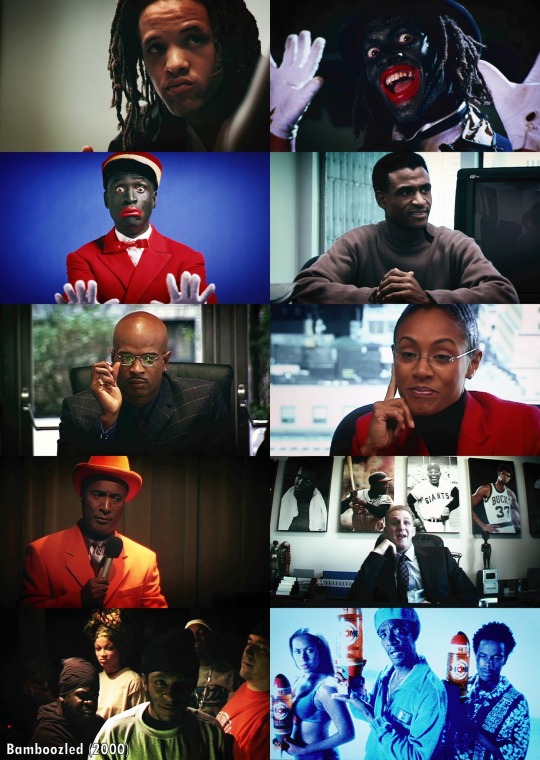
"Bamboozled" (2000) is a comedy-drama written and directed by Spike Lee about two homeless street performers who agree to partake in a television network show where they perform in blackface. Spike Lee examines the racist depiction in Hollywood movies featuring Black people in satirical form. Blackface became popular in American Minstrel shows during the early 1800s, many years before emerging in Hollywood movies. But in the early 1900s, blackface appeared more in films predominantly played by White people until Black people, such as Bert Williams, began earning film opportunities in the mid-1910s.
There were two primary types of blackface in early Hollywood. The first was in clown form, using some form of black paint or polish (most common in Minstrel shows), and the other was White people portraying Black people in movies with black makeup. Negative stereotypes in Hollywood movies evolved further into characters such as Lincoln Perry (a.k.a. Stepin Fetchit) or Mantan Mooreland, the central inclination of Lee's film.
Throughout the movie, there are several examples of racist depictions of Black people in film and cartoon form. However, the film analyzes corporate dishonesty, the contentious rap militant group fed up with the show's racist content, and the easily appeased audience. The actors performed very well on a complicated topic. Unfortunately, the film flopped at the box office, grossing $2.5 million on a $10 million budget. The movie requires context and understanding. It's an educational piece of artwork not only from the premise of the film but also the technical mastery in editing and cinematography. The soundtrack was a mixture of hip-hop and R&B, peaking at #60 on the Top R&B/Hip-Hop Albums chart.
Director: Spike Lee
Writer: Spike Lee
Starring Damon Wayans, Savion Glover, Jada Pinkett Smith, Tommy Davidson, Michael Rapaport, Thomas Jefferson Byrd, Paul Mooney, Sarah Jones, Gillian White, Susan Batson, Yasiin Bey, M.C. Serch, Gano Grills, Canibus, DJ Scratch, Charli Baltimore, Craig muMs Grant
Storyline
Under pressure to help revive his network's low ratings, television writer Pierre Delacroix (Damon Wayans) hits on an explosively offensive idea: bringing back blackface with The New Millennium Minstrel Show. The white network executives love it, and so do audiences, forcing Pierre and his collaborators to confront their public's insatiable appetite for dehumanizing stereotypes.
Available on Blu-ray and streaming services.
0 notes
